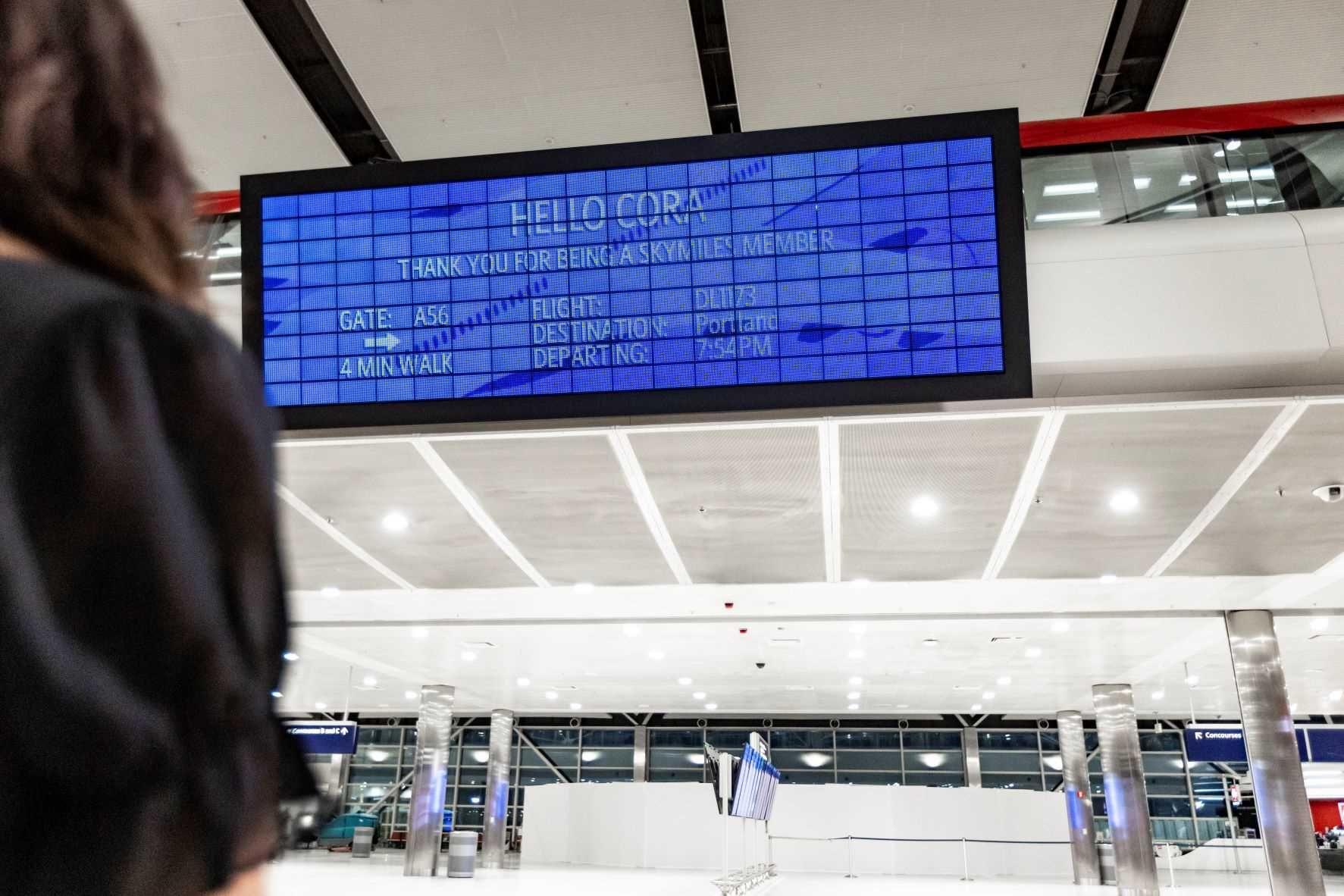Enhancing the Airport Experience: The Power of Human Factors in Design
Airports serve as gateways to the world, facilitating global travel and connecting people from various cultures and backgrounds. However, the success of an airport extends beyond its ability to transport passengers. It lies in the careful consideration of human factors in airport design, ensuring customer centricity, safety, efficient operations, and the optimisation of profit. In this blog post, we will explore the significance of human factors in airport design.

Customer Centricity: Delighting Passengers at Every Step
Airport designers recognise the importance of placing customers at the heart of their operations. By adopting a customer-centric approach, airports aim to create seamless and enjoyable experiences for those travelling. One key aspect is the intuitive layout of terminal buildings, where clear signage and wayfinding systems help passengers navigate vast, complex, and unfamiliar buildings with ease. Incorporating comfortable breakaway areas, interactive information displays, and engaging amenities also contribute to enhancing customer satisfaction.
Moreover, airports have started to embrace the concept of personalised services. By leveraging technologies such as mobile applications, self-check-in kiosks, and digital wayfinding, passengers can have greater control over their travel journey. Do you remember the "Parallel Reality" departure board? Additionally, airports can tailor their services to individual preferences, offering personalised notifications, dining options, and retail recommendations. According to a report by SITA, 70% of passengers prefer to use self-service technology for a faster and more convenient experience. By focusing on customer needs and preferences, airports can foster positive experiences and build long-lasting relationships.

Safety: Ensuring a Secure Environment
Ensuring safety is paramount in airport design, encompassing both physical and operational aspects. Human factors play a critical role in identifying potential risks, mitigating hazards, and optimising processes to minimise accidents and security breaches. This includes factors such as designing efficient emergency evacuation plans, installing robust security systems, and implementing strict protocols for baggage handling and screening.
It goes deeper than surface-level design. Human factors plays an integral role in the design of control rooms too. Air Traffic Control towers implement human factors considerations into their design to ensure that safety-critical operations run as smoothly as possible. According to the Federal Aviation Administration, involving human factors at an early stage of the process has substantial cost savings, especially when redesign systems. A general rule of thumb is that for every $1 spent on human factors early in the development cycle, $100 is saved on fixing the problem once the system is released (Gilb, 1988). Whilst this is a dated reference, the principle remains true; early investment reduces costs further down the line!
Airports also employ human factors principles to enhance communication during emergency situations. Well-designed public address systems, clear signage, and multilingual announcements contribute to effective communication, ensuring passengers receive timely instructions and updates. By focusing on safety, airports instill confidence in travellers, reassuring them that their well-being is prioritised.
Good Design: Harmonising Aesthetics and Functionality
Successful airport design strikes a balance between aesthetics and functionality. Human factors experts collaborate with architects and designers to create visually appealing spaces while ensuring they meet the operational needs of an airport. Natural lighting, spacious interiors, and visually pleasing elements contribute to a positive ambiance, reducing stress and creating a welcoming atmosphere. This goes when step further when considering the implications of poor design. Architectural repetitive patterns have been known to trigger seizures in people with Epilepsy, and high-contrast repetitive patterns create discomfort on a continuum for all. Whilst this is well researched, inclusion of human factors design teams can ensure that adequate insight has been provided to minimise costly design mistakes.
Furthermore, good design involves optimising the flow of passengers, minimising bottlenecks, and ensuring efficient processes. By studying passenger behaviour and movement patterns, airports can optimise check-in and security areas, reducing wait times and enhancing overall efficiency. This careful planning and attention to detail lead to smoother operations and improved customer satisfaction.

Minimising Waits: Enhancing Efficiency and Passenger Flow
One of the most significant pain points for travellers is waiting time. Human factors principles enable airports to identify bottlenecks and implement strategies to minimise waits effectively. For example, self-check-in kiosks, automated passport control systems, and biometric technologies expedite the check-in and security processes, reducing queuing time and improving overall efficiency.
The implementation of self-check-in kiosks at airports has significantly reduced queueing time for passengers. While the exact reduction in queueing time may vary depending on factors such as airport size, peak travel periods, and passenger volume, studies and reports have shown notable improvements. For example, according to a report by SITA, self-service check-in kiosks can reduce queueing time by up to 25%. This reduction is attributed to the ability of passengers to independently complete the check-in process, avoiding the need to wait in line for assistance from airline staff.
Additionally, airports leverage data analytics and predictive modelling to optimise resource allocation, staffing levels, and flight schedules. By analysing historical data and passenger behaviour, airports can accurately anticipate demand and adjust their operations accordingly. This proactive approach ensures efficient use of resources, reduces delays, and enhances the overall passenger experience.
If you’d like to read more about what happens when things go wrong, then check out this article by David Watts (Managing Director, Mima) which highlights the importance of addressing disruptions and challenges in the travel industry, which often go unnoticed by technology vendors and other stakeholders. Ultimately, we live in a world where moving parts and complex systems can’t always run effectively, airports are no exception. What truly matters is how transport operators respond to disruptions reflects their commitment to delivering excellent customer service.

Maximising Profitability: Leveraging Human Factors Principles
The principles of human factors extend beyond customer satisfaction and safety; they also contribute to maximising profitability. By designing airport spaces that encourage commercial activities, airports can create additional revenue streams. Strategic placement of retail shops, restaurants, and lounges within the terminal buildings ensures increased visibility and customer engagement. Additionally, well-designed duty-free shopping areas and experiential zones can entice passengers to spend more time and money within the airport premises.
Several industries have embraced human factors principles to optimise profitability and customer happiness. Theme parks employ queue management techniques to minimise waiting times and enhance visitor satisfaction. Hotels focus on creating immersive and comfortable experiences through thoughtful room layouts, amenities, and personalised services. These industries recognise that human factors contribute significantly to their success and apply these principles to enhance profitability and customer satisfaction.
Mima's innovative repack station and messaging intervention at Liverpool John Lennon Airport not only improved passenger experiences and throughput but also led to significant cost-saving efficiencies. The 15% increase in security throughput optimised staff utilisation and reduced operational expenses related to managing crowd control and security personnel. Additionally, the extended airside dwell time resulted in a substantial £250,000 per annum increase in commercial sales, showcasing the project's financial success.
Human factors are instrumental in shaping the design of airports, enabling them to deliver exceptional customer experiences while maintaining safety and operational efficiency. By adopting customer-centric approaches, focusing on safety measures, embracing good design principles, minimising waiting times, and leveraging profitability, airports can create memorable journeys for travellers. Drawing inspiration from other industries that have successfully incorporated human factors principles, airports can continually evolve and enhance their offerings, ensuring passenger happiness and sustained profitability in an increasingly competitive landscape.